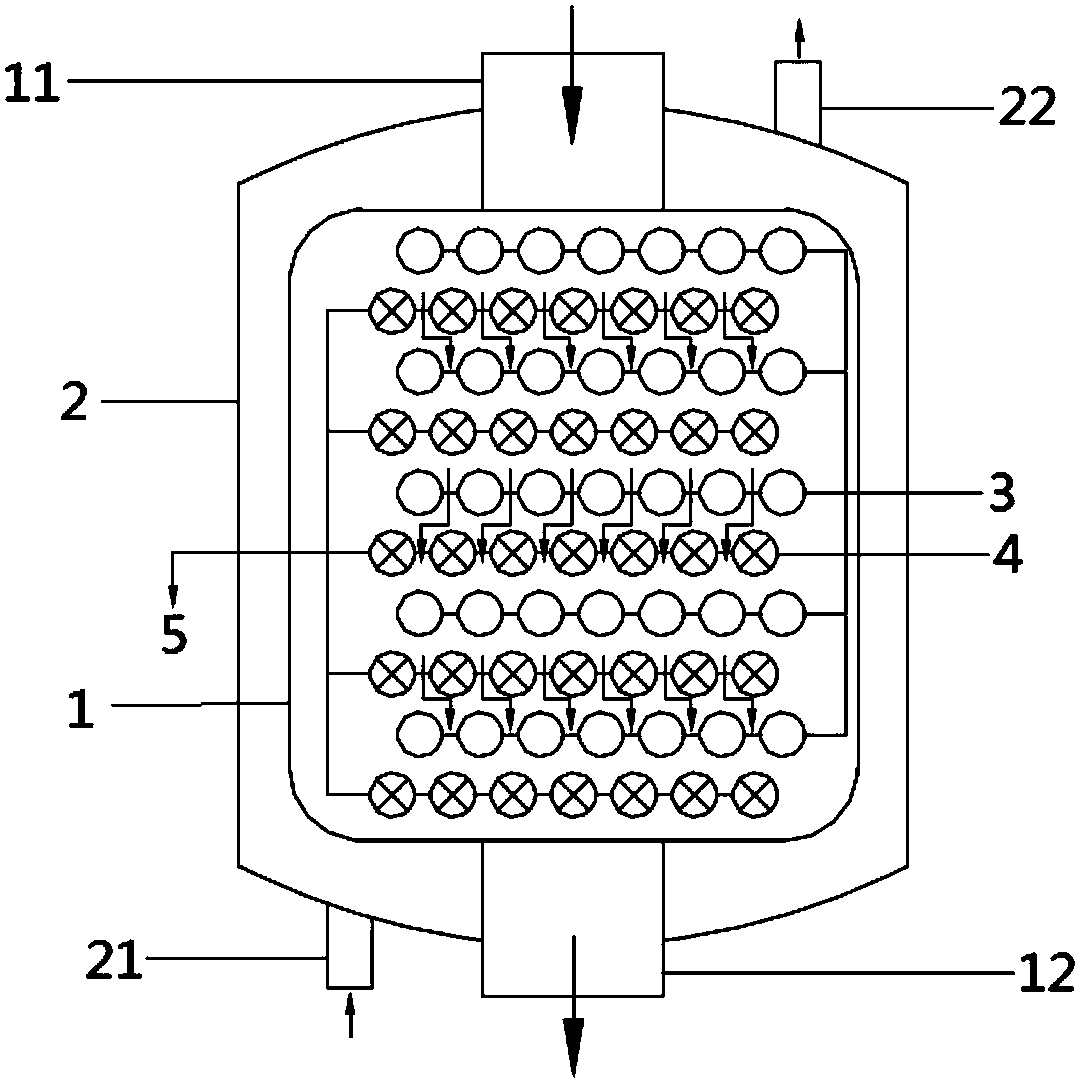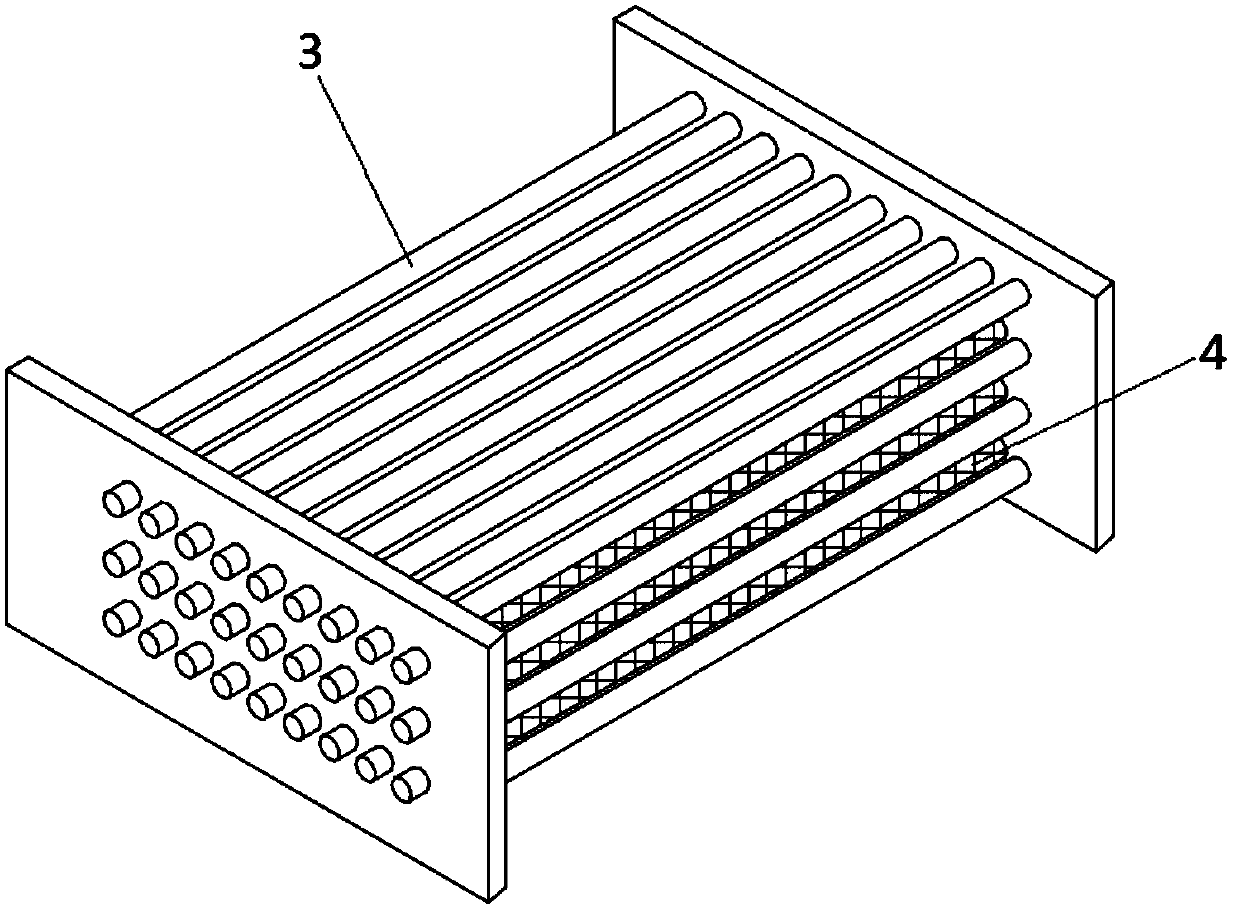Method for decomposing hydrogen sulfide through dielectric barrier discharge
A dielectric barrier discharge and hydrogen sulfide technology, applied in the field of plasma chemistry, can solve the problems of low conversion rate of hydrogen sulfide and high decomposition energy consumption, and achieve the effect of low decomposition energy consumption and high conversion rate of hydrogen sulfide
- Summary
- Abstract
- Description
- Claims
- Application Information
AI Technical Summary
Problems solved by technology
Method used
Image
Examples
specific Embodiment approach
[0088] Nitrogen gas is introduced into the inner barrel of the grid plasma reactor from the reactant inlet to remove the air in the discharge area, and the gas is drawn out from the product outlet. At the same time, the heat transfer medium is introduced into the outer cylinder from the heat transfer medium inlet, and the introduced heat transfer medium is led out from the heat transfer medium outlet. The temperature of the heat transfer medium is maintained at the temperature required for the reaction. Then feed the raw material gas containing hydrogen sulfide into the inner cylinder of the grid type plasma reactor from the inlet of the reactant. The raw material gas fills each reaction tube. A plasma discharge field is formed between the electrode and the ground electrode. The hydrogen sulfide gas is ionized in the discharge area and decomposed into hydrogen and elemental sulfur. The elemental sulfur produced by the discharge slowly flows down the inner cylinder wall and fl...
Embodiment 1
[0119] use figure 1 The grid-type plasma reactor shown performs hydrogen sulfide decomposition reaction, and the specific structure and structural parameters of the grid-type plasma reactor are as follows:
[0120] Grid plasma reactors include:
[0121] an inner cylinder, the inner cylinder is respectively provided with a reactant inlet and a product outlet;
[0122] an outer cylinder, the outer cylinder is nested outside the inner cylinder, and the outer cylinder is respectively provided with a heat-conducting medium inlet and a heat-conducting medium outlet, and the heat-conducting medium introduced by the heat-conducting medium inlet can surround the inner cylinder the outer periphery of the cylinder, and the heat transfer medium can be drawn out from the heat transfer medium outlet;
[0123] High-voltage electrodes, the high-voltage electrodes are arranged in the inner cylinder, and the high-voltage electrodes are arranged in five layers in the inner cylinder; in each hi...
Embodiment 2
[0137] use figure 2The grid-type plasma reactor shown performs hydrogen sulfide decomposition reaction, and the specific structure and structural parameters of the grid-type plasma reactor are as follows:
[0138] Grid plasma reactors include:
[0139] an inner cylinder, the inner cylinder is respectively provided with a reactant inlet and a product outlet;
[0140] an outer cylinder, the outer cylinder is nested outside the inner cylinder, and the outer cylinder is respectively provided with a heat-conducting medium inlet and a heat-conducting medium outlet, and the heat-conducting medium introduced by the heat-conducting medium inlet can surround the inner cylinder the outer periphery of the cylinder, and the heat transfer medium can be drawn out from the heat transfer medium outlet;
[0141] High-voltage electrodes, the high-voltage electrodes are arranged in the inner cylinder, and the high-voltage electrodes are arranged in five layers in the inner cylinder; in each hi...
PUM
| Property | Measurement | Unit |
|---|---|---|
| diameter | aaaaa | aaaaa |
Abstract
Description
Claims
Application Information
 Login to View More
Login to View More - Generate Ideas
- Intellectual Property
- Life Sciences
- Materials
- Tech Scout
- Unparalleled Data Quality
- Higher Quality Content
- 60% Fewer Hallucinations
Browse by: Latest US Patents, China's latest patents, Technical Efficacy Thesaurus, Application Domain, Technology Topic, Popular Technical Reports.
© 2025 PatSnap. All rights reserved.Legal|Privacy policy|Modern Slavery Act Transparency Statement|Sitemap|About US| Contact US: help@patsnap.com



